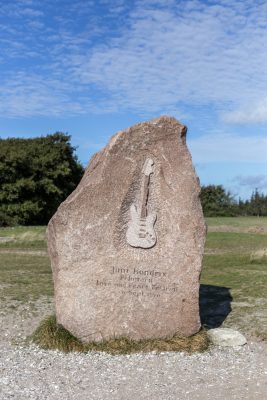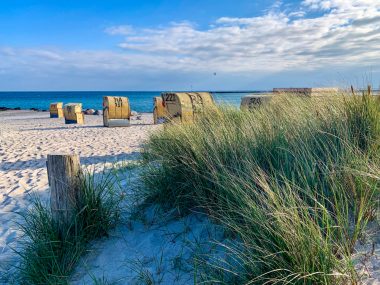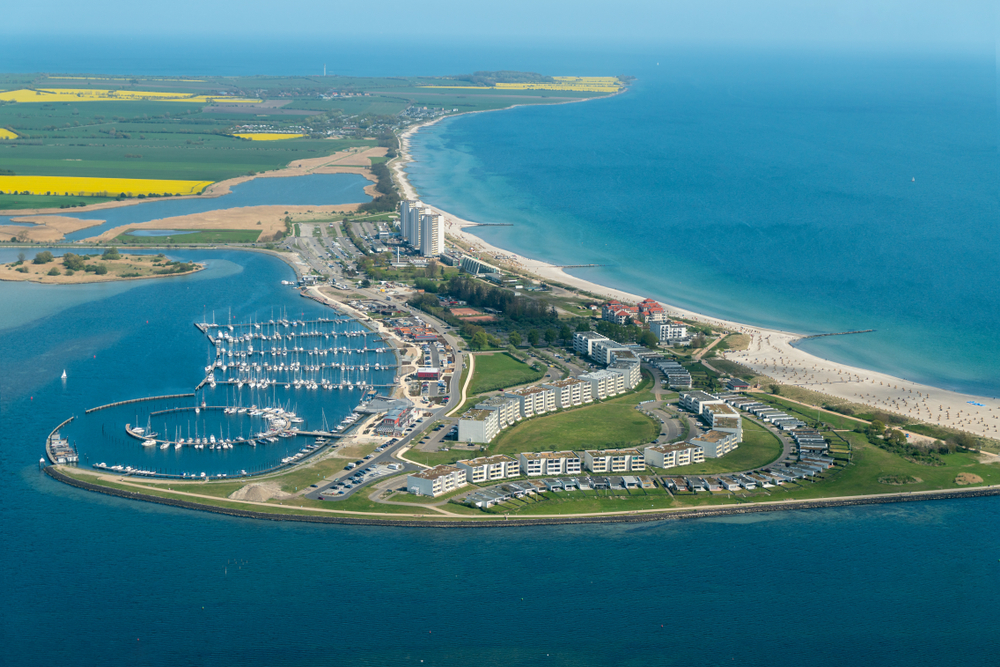When talking about Schleswig-Holstein and its islands, most people probably think of Sylt, Amrum and other insular North Sea beauties. But island fans can also find what they are looking for off the east coast of the northernmost federal state. Apart from the lock islands in Kiel-Holtenau and the two tiny Warder Islands in the Lemkenhafener Wiek, however, there is only one island in the Schleswig-Holstein Baltic Sea: Fehmarn.
Between Holstein and Denmark
The island is not only unique, but also big. With an area of 185 square kilometers, Fehmarn is twice the size of Sylt and thus the largest island in Schleswig-Holstein. In the all-German island area ranking, Fehmarn takes 3rd place after Rügen and Usedom. The island, which belongs to the district of Ostholstein with its 12,000 inhabitants, has formed a single municipality since a municipal reform, in which the former town of Burg (6,000 inhabitants) and the former municipalities of Westfehmarn, Bannesdorf and Landkirchen, which were divided into many villages, have been merged. Fehmarn is located in front of the eastern tip of the Wagrien peninsula.
The Fehmarnsund strait, which separates the mainland and the island here, is barely a kilometre wide. Since 1963, there has been a fixed crossing over this strait with the Fehmarnsund Bridge, which is passable for motor vehicles and railways. The fact that a similar bridge could ever be built on the north side of Fehmarn over the 15 km wide Fehmarn Belt between Fehmarn’s ferry port Puttgarden and the Danish neighboring island of Lolland is always considered, but so far it is speculation.
Exciting island history

In some respects, Fehmarn’s history occupies a special position. In contrast to most other regions of the duchies of Schleswig and Holstein, the rural population of the “Fehmarn Landscape” was able to preserve extensive rights of freedom and self-government. The lack of serfdom, which was common on Schleswig-Holstein aristocratic estates on the mainland until the beginning of the 19th century, is particularly noteworthy. Fehmarn had been settled by members of the Slavic tribe of the Abodrites since the early Middle Ages.
The island’s name is derived from the West Slavic term “fe more”, which means “in the sea”. Later, the Slavs mixed with Holstein, Dutch and Danish new settlers. Fehmarn had changing sovereigns. Around 1020, the Bishop of Odense was the lord of the island, then the Counts of Schauenburg. In the war against Danish King Erich in 1420, most of the island’s population was wiped out. Count Adolf VIII of Holstein-Schauenburg lured members of Dithmarschen farming families from the North Sea coast in particular to the island with the promise of freedom and tax privileges for resettlement. Later part of the Danish state, Fehmarn became Prussian in 1867. Thanks to the initiative of a British diplomat, Fehmarn narrowly escaped the fate of being added to the Soviet occupation zone after the Second World War.
For many rock fans, the most important post-war event on Fehmarn was the Love and Peace Festival, celebrated in 1970: Jim Hendrix’s last appearance celebrated there is now commemorated by a memorial stone near the Flügge lighthouse.
Varied landscape, wide beaches

The landscape of Fehmarn, shining in lush green, shows many attractive differences. In addition to pastures for livestock farming of black Holstein cattle and the black earth fields unique to Schleswig-Holstein, wide areas with dunes, spits, small lakes and white beaches are reserved for nature conservation and recreation. There are hardly any elevations on the flat island. The highest island hill, the Hinrichsberg in the village of Staberdorf, is not particularly impressive with its 27 m height. In contrast, the cliff coast on the east side of the island has a rugged, stony drama that contrasts with the soft dune landscapes of the north coast. The beaches on the south coast, which are as wide as they are fine sand, are particularly popular with bathing enthusiasts.
Pure holiday joy
It is not in the south, but in the north that it is sunniest: With about 2,220 hours of sunshine, Fehmarn is a whopping 10% above the national average, making it the sunniest area in Germany. Even before agriculture, tourism is the No. 1 economic factor on Fehmarn. Nevertheless, the sprawling island does not make an overcrowded impression even in the high season. Fehmarn has a lot to offer its guests. In addition to holiday guesthouses, campsites, holiday farms or hotels, Fehmarn visitors can also choose an original sleeping beach chair or a well-kept holiday apartment on Fehmarn as a starting point for exploring the island. If you travel with many people and prefer to book holiday homes on the Baltic Sea , you will also benefit from the large selection of houses. In addition to beach and bathing pleasure, wellness and sauna, body and soul can be done good with kiting, hiking, cycling, surfing or sailing. Fun is also guaranteed by the Viwa Watersports water park and pedal boat rental on the south beach, a round of soccer golf in Burg or Siloclimbig in Burgstaaken.
Museums such as the Peter Wiepert Museum in Burg or the Mill and Agricultural Museum in Lemkenhafen provide information about the local history of the island. In Burgstaaken, one of the standard U-boats from the early days of the West German Navy can be visited with the Bundeswehr veteran U 11, who was active from 1968 to 1987. Fehmarn wildlife can also be admired: at various vantage points or during guided tours in the nature reserves, people can get up close to cormorants, grebes and the like.
Arrival in Fehmarn
Since Fehmarn was connected to the mainland by its Sund Bridge, the journey has become uncomplicated. From Hamburg , the driver drives on the A1 via Lübeck to Heiligenhafen at the eastern tip of Ostholstein to Fehmarn. From there, it is only a few kilometres on the B 207 to the Fehmarnsund Bridge. If you choose the train for the journey, you can reach the island stations of Burg and Puttgarden by regional trains or by the ICE trains running on the Vogelfluglinie between Germany and Denmark .


